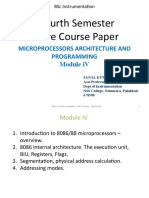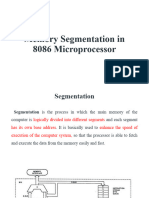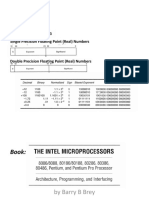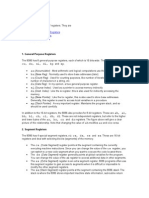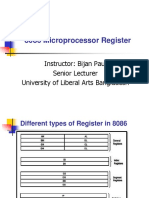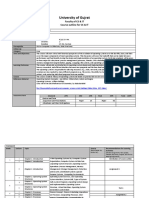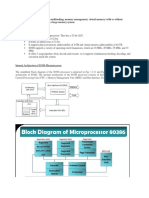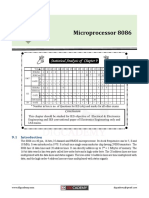0% found this document useful (0 votes)
32 views22 pagesLecture 3 (Memory Segment)
The document discusses the memory segmentation technique used by the 8086 microprocessor to access 20-bit addresses using 16-bit registers. It explains how memory is divided into segments of 64kB, with each segment identified by a segment number and an offset address. Additionally, it describes the relationship between logical and physical addresses and provides examples and assignments related to calculating physical addresses and segment addresses.
Uploaded by
manzoormurshedctgCopyright
© © All Rights Reserved
We take content rights seriously. If you suspect this is your content, claim it here.
Available Formats
Download as PDF, TXT or read online on Scribd
0% found this document useful (0 votes)
32 views22 pagesLecture 3 (Memory Segment)
The document discusses the memory segmentation technique used by the 8086 microprocessor to access 20-bit addresses using 16-bit registers. It explains how memory is divided into segments of 64kB, with each segment identified by a segment number and an offset address. Additionally, it describes the relationship between logical and physical addresses and provides examples and assignments related to calculating physical addresses and segment addresses.
Uploaded by
manzoormurshedctgCopyright
© © All Rights Reserved
We take content rights seriously. If you suspect this is your content, claim it here.
Available Formats
Download as PDF, TXT or read online on Scribd
/ 22














